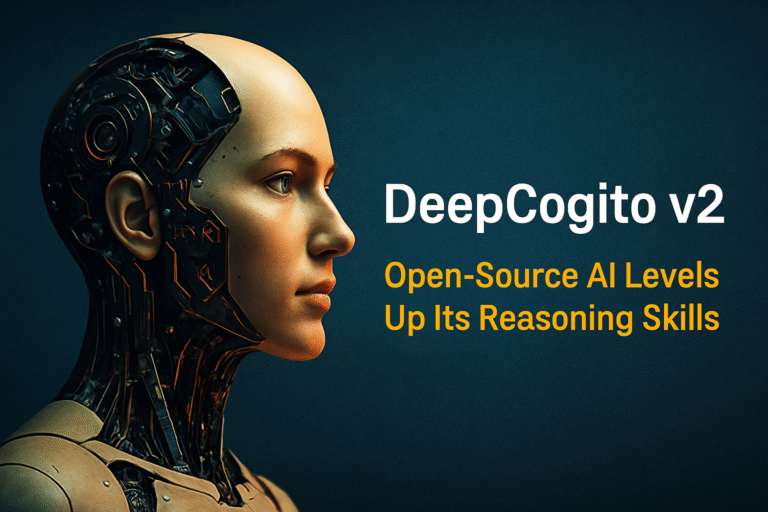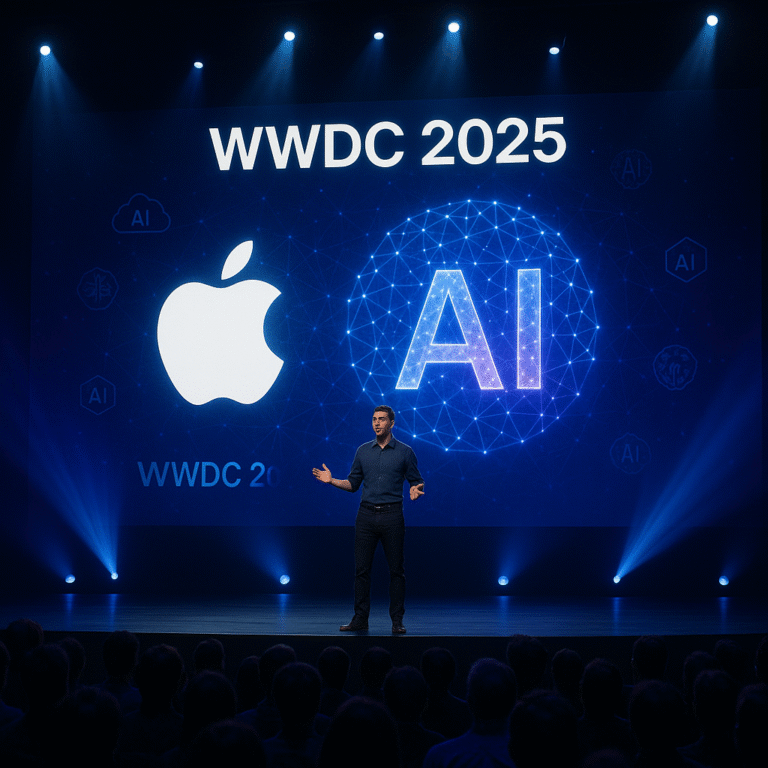
The digital landscape was recently shaken by demonstrations from OpenAI’s Sora, showcasing AI’s startling ability to generate realistic and imaginative video clips from simple text prompts. While Sora captured mainstream attention, it stands on the shoulders of pioneers like Runway and Pika Labs and represents just the crest of a massive wave: the generative video revolution. This technological leap, fueled by advancements in artificial intelligence, particularly diffusion models and transformers, is poised to fundamentally reshape filmmaking, content creation, marketing, and beyond. However, focusing solely on the most hyped models provides an incomplete picture. A vibrant ecosystem of emerging generative video tools, alongside open-source projects, is bubbling beneath the surface, each tackling specific challenges, offering unique features, and contributing to the democratization of video creation. This article delves beyond the headlines, exploring this broader landscape, spotlighting key emerging generative video tools, analyzing the underlying technology, comparing platform capabilities, and dissecting the profound impact on the future of filmmaking and the ethical considerations that come with it. Get ready to witness the moving image being reimagined.
Setting the Stage: The Pioneers Who Ignited the Spark (Sora, Runway, Pika)
Before we explore the newcomers, it’s crucial to acknowledge the platforms that brought generative video into the limelight.
- Runway: A veteran in the AI creative tools space, Runway (specifically RunwayML and its Gen-1 and Gen-2 models) was among the first to offer widely accessible text-to-video and video-to-video capabilities. They focused on integrating AI tools directly into a creative workflow, empowering artists and editors. Their contribution lies in making generative video tangible and usable for creators early on.
- Pika Labs: Gaining rapid popularity through platforms like Discord, Pika Labs offered impressive text-to-video generation with a focus on stylistic control and animation. They demonstrated the demand for accessible, high-quality AI video tools, particularly within online creative communities.
- OpenAI’s Sora: Sora represented a significant leap in quality, coherence, and duration (up to 60 seconds in demos). Its ability to simulate complex scenes, maintain character consistency (to a degree), and understand physical interactions (imperfectly), as detailed on OpenAI’s Sora introduction page, set a new benchmark and captured global imagination, highlighting the sheer potential of text-to-video AI.
While these platforms are impressive, they often come with limitations: access restrictions (Sora is not yet public), variable coherence over longer durations, occasional uncanny valley effects, and the inherent challenges of a rapidly evolving technology. This creates fertile ground for new innovators and emerging generative video tools.
Spotlight on Emerging Generative Video Tools: Players & Platforms to Watch
The generative video space is exploding with innovation. While pinpointing specific long-term winners is difficult, several key trends and types of emerging players are worth monitoring:
1. Coherence & Control: A Key Focus for Emerging Generative Video Tools
A major hurdle for generative video is maintaining consistency – of characters, objects, and environments – across multiple shots or longer durations. Several startups and research projects are specifically tackling this “temporal coherence” problem using novel approaches within these emerging generative video tools.
- Potential Features: Tools designed to accept detailed character sheets or environment descriptions, advanced prompting techniques for shot continuity, or even integrating with 3D assets for stronger structural consistency.
- Use Cases: Narrative filmmaking (short films, pre-visualization), consistent character animations for marketing or explainers, architectural walkthroughs.
- Challenges: Computationally intensive, potentially complex user interfaces, achieving perfect consistency remains elusive even for the most advanced emerging generative video tools.
2. Artistic Styles Powered by New Generative Video Platforms
While realism is one goal, many creators desire unique visual styles. Emerging platforms are focusing on offering deep control over artistic aesthetics, moving beyond generic prompts.
- Potential Features: Training models on specific artistic styles (anime, watercolor, cyberpunk, etc.), fine-tuning capabilities for users to input their own style references, advanced parameter controls for texture, lighting, and motion style.
- Use Cases: Music videos, animated shorts, digital art installations, unique marketing campaigns, game asset previews.
- Challenges: Balancing stylistic control with prompt understanding, avoiding copyright issues with style training data.
3. Open Source: A Hub for Emerging Generative Video Tools
The open-source community is a powerful force in AI. Models like Stable Diffusion revolutionized image generation, and similar efforts are underway for video, fostering a different breed of emerging generative video tools.
- Key Example: Stable Video Diffusion (SVD): Developed by Stability AI, SVD provides foundational image-to-video and (more recently) text-to-video capabilities. While potentially lagging behind closed-source giants in raw quality or coherence initially, its open nature allows for rapid community development, fine-tuning, and integration into other tools.
- Advantages: No direct usage fees (but requires compute resources), transparency, customization, potential for specialized community models.
- Use Cases: Research and experimentation, developers building custom applications, creators with technical skills seeking maximum control or lower costs.
- Challenges: Often requires technical expertise to run and optimize, performance might vary, ethical concerns regarding misuse are harder to control.
4. Workflow Integration: Practical Emerging Generative Video Tools
Rather than standalone platforms, some developers are focusing on bringing generative video capabilities directly into existing professional workflows, making these practical emerging generative video tools highly desirable.
- Potential Features: Plugins for Adobe Premiere Pro, DaVinci Resolve, Final Cut Pro, or Blender that allow generating short clips, B-roll footage, transitions, or VFX elements directly within the editing timeline using text prompts.
- Use Cases: Speeding up editing workflows, generating quick placeholders or concept visuals, creating simple VFX without specialized software, enhancing stock footage. These tools are essential for maintaining a competitive edge with the latest tech.
- Challenges: Seamless integration, maintaining performance within the host software, ensuring consistency with existing project footage.
The Technology Under the Hood: A Glimpse into AI Video Generation
Understanding the basics of how these models work helps appreciate their capabilities and limitations. Most state-of-the-art generative video models, including many emerging generative video tools, rely on combinations of:
- Diffusion Models: These models learn to create data (like video frames) by starting with random noise and gradually refining it, step-by-step, based on learned patterns from vast datasets and guided by the input prompt. They excel at generating high-fidelity images and are being adapted for the temporal dimension of video.
- Transformers: Originally dominant in natural language processing (like GPT), transformer architectures are adept at understanding context and relationships across sequences. In video, they help interpret text prompts and manage the relationship between frames to improve coherence and motion.
- Large Datasets: These models are trained on enormous datasets containing videos and associated text descriptions. The quality and diversity of this data heavily influence the model’s capabilities, biases, and understanding of the world.
Key Technical Challenges:
- Temporal Coherence: Ensuring consistency across frames is much harder than generating a single image.
- Computational Cost: Training and running large video models requires immense computing power (often specialized AI chips like GPUs or TPUs), making it expensive.
- Understanding Physics and Causality: While improving (as seen in Sora demos), accurately simulating real-world physics and complex interactions remains a significant hurdle.
- Controllability: Translating nuanced human intent from a text prompt into precise visual output is still an ongoing challenge for most emerging generative video tools.
Comparing Emerging Generative Video Tools: Features & Use Cases
Choosing the right tool depends heavily on specific needs. The following table provides a comparative overview of established platforms versus different types of emerging generative video tools.
| Feature / Aspect | Known Players (Sora*, Runway, Pika) | Emerging Coherence-Focused (e.g., CoherentFrames) | Emerging Stylistic (e.g., StyleSynth) | Open Source (e.g., Stable Video Diffusion) | Integration Plugins |
| Primary Input | Text, Image, Video (Runway) | Text, Detailed Descriptions, potentially 3D assets | Text, Style References, Images | Text, Image (primarily) | Text (within NLE) |
| Output Realism | High (Sora) to Medium/High | Potentially High (focus on consistency) | Variable (focus on style) | Medium to High (improving rapidly) | Variable |
| Temporal Coherence | Moderate (Sora improving) to Low | High (Primary Goal) | Moderate to Low | Moderate (improving, varies by model) | Low (short clips) |
| Style Control | Basic to Moderate | Moderate | High (Primary Goal) | Moderate (via prompts, LoRAs) | Basic |
| Character Consistency | Moderate (Sora improving) to Low | High (Potential Goal) | Low to Moderate | Low to Moderate | Low |
| Ease of Use | High (Web UI/Discord) | Potentially Moderate to Complex | Moderate to High | Low to Moderate (requires setup) | High (within NLE) |
| Accessibility | Limited (Sora*) to Paid Tiers | Likely Paid/Enterprise focus | Freemium/Paid Tiers likely | Free (requires hardware/cloud compute) | Paid Plugin Model |
| Cost Model | Subscription / Credits | Likely Subscription / Enterprise | Subscription / Credits | Compute Cost / Free Software | Plugin Purchase/Sub |
| Open Source? | No | No | No | Yes | No |
| Target Use Case | Prototyping, Marketing, Art | Narrative, Consistent Animation | Art, Music Videos, Marketing | Experimentation, Custom Dev, Pro-hobbyist | Editing Assist, VFX |
Key Takeaways from Comparison:
- No single tool currently excels at everything.
- Established players offer accessibility and improving quality but may lack deep control or consistency.
- Emerging generative video tools often target specific niches (coherence, style).
- Open-source offers flexibility and cost savings but requires technical skill.
- Integration plugins prioritize workflow speed over standalone generation power.
The Seismic Shift: Impact on Filmmaking and Creative Industries
Generative video isn’t just a novelty; it’s a disruptive force with far-reaching implications:
- Democratization of Creation: Individuals and small teams can now create video content that previously required large budgets, crews, and specialized equipment. This lowers the barrier to entry for aspiring filmmakers and creators, much like how AI is changing education by providing new tools for learning and expression. The democratization effect is amplified by the increasing accessibility of emerging generative video tools.
- Rapid Prototyping and Pre-visualization: Directors and agencies can quickly visualize complex scenes, camera movements, or entire sequences from scripts, facilitating communication and iteration before expensive shoots.
- New Creative Horizons: AI can generate visuals impossible or impractical to film, opening doors for surreal, fantastical, and abstract storytelling. It can also serve as an “infinite” source of inspiration.
- Revolutionizing VFX and Post-Production: Generating specific VFX elements (explosions, fantastical creatures), creating synthetic backgrounds, or even automating simple B-roll footage could drastically speed up post-production.
- Hyper-Personalized Marketing: Brands can generate countless variations of video ads tailored to specific demographics or platforms automatically.
- Stock Footage Disruption: AI-generated clips could supplement or replace traditional stock video libraries for certain use cases.
- Shifting Skillsets: While some roles might be impacted (e.g., certain VFX tasks, stock providers), demand will grow for “AI wranglers,” prompt engineers, AI ethicists, and creatives who can effectively collaborate with these tools. Adapting to utilize emerging generative video tools will be key for creatives wanting to stay relevant. The focus shifts from manual execution to creative direction and curation.
Navigating the Labyrinth: Ethical Considerations and Challenges
With great power comes great responsibility. The rise of generative video surfaces critical ethical concerns:
- Deepfakes and Misinformation: The ability to create realistic videos of people saying or doing things they never did poses significant threats to personal reputation, political stability, and trust in media. Robust detection and watermarking techniques are crucial.
- Copyright and Intellectual Property: Models are trained on vast datasets, potentially including copyrighted material without permission. Who owns the copyright of AI-generated output? Can specific styles be copyrighted? These are complex legal questions currently being debated.
- Bias and Representation: AI models can inherit and amplify biases present in their training data, leading to stereotypical or unfair representations of people and cultures. Ensuring diverse datasets and algorithmic fairness is paramount.
- Authenticity and the “Human Touch”: As AI becomes capable of mimicking human creativity, questions arise about the value of authenticity, originality, and the unique perspective of human artists.
- Job Displacement Anxiety: While new roles will emerge, concerns about AI automating tasks previously done by human creatives are valid and require proactive discussion about reskilling and adaptation.
The Future Trajectory: What’s Next in the Generative Video Saga?
The pace of innovation is relentless. We can expect to see rapid advancements in the coming years:
- Improved Coherence and Physics: Longer videos with consistent characters, objects, and more believable physical interactions.
- Higher Resolution and Fidelity: Approaching or exceeding standard cinematic quality (4K, 8K).
- Enhanced Controllability: More granular control over camera angles, character actions, lighting, and scene elements through multi-modal inputs (text, sketches, audio, motion capture).
- Real-Time Generation: The potential for generating video feeds live, perhaps for interactive experiences or dynamic backgrounds.
- Seamless Workflow Integration: Deeper embedding of generative tools within professional editing suites and 3D software.
- Specialized Models: AI models trained for specific industries or tasks (e.g., medical animation, architectural visualization, educational content).
- Evolving Open-Source Landscape: Continued improvement and diversification of open-source models, fostering innovation outside large corporate labs.

Conclusion: Embracing the Inevitable – Co-Creating the Future of Video
The generative video revolution is not a distant prediction; it’s unfolding now. While platforms like Sora, Runway, and Pika laid the groundwork, the true depth and breadth of this transformation are being shaped by a diverse ecosystem of emerging generative video tools, open-source initiatives, and ongoing research. From hyper-realistic simulations to boundless artistic expression, AI video generation offers unprecedented tools for creativity and communication.
However, this potential comes hand-in-hand with significant technical hurdles and profound ethical responsibilities. Navigating the challenges of coherence, control, bias, copyright, and misinformation will be critical. The future of filmmaking and countless other industries will likely involve a symbiotic relationship between human creativity and artificial intelligence, where AI handles the laborious or impossible, freeing humans to focus on vision, storytelling, and emotional resonance.
The key is not to fear the technology but to understand it, engage with it critically, and guide its development responsibly. Whether you’re a filmmaker, a marketer, an artist, or simply curious about the future, the era of AI-generated video is here, and its story is just beginning to be written. The transformation is being shaped by this diverse ecosystem of emerging generative video tools; the challenge and opportunity lie in learning how to wield them effectively and ethically to tell the stories of tomorrow.





